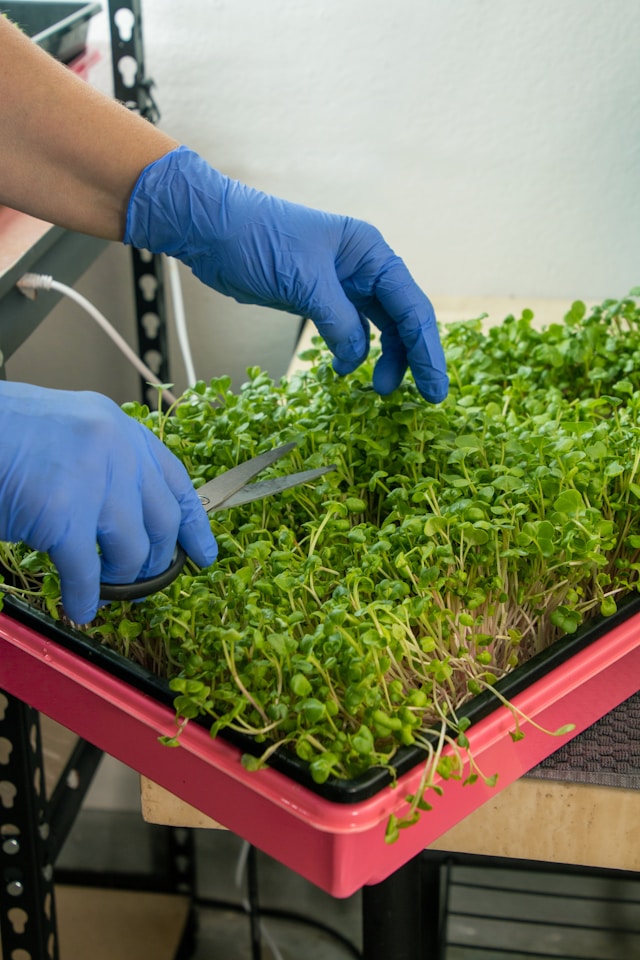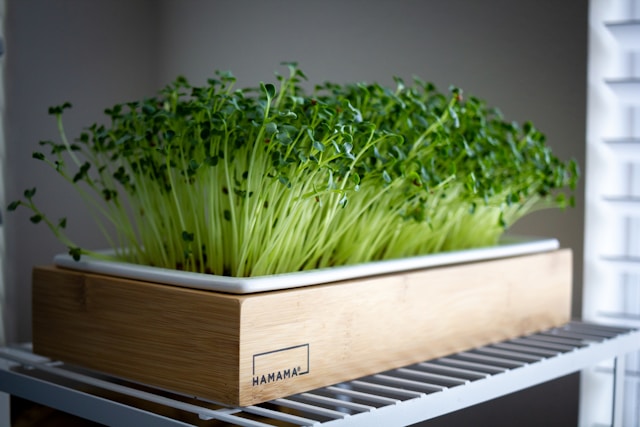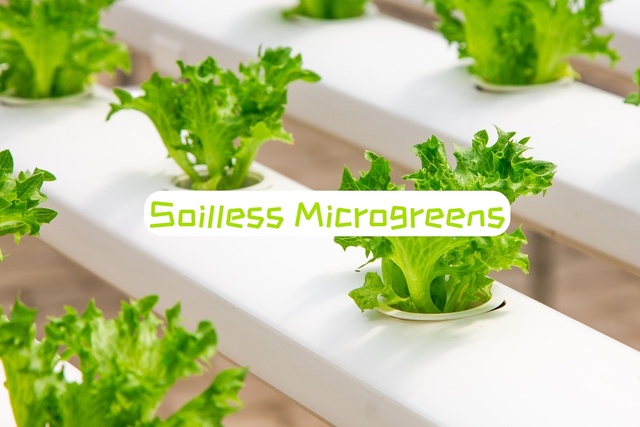The Ultimate Soilless Microgreen Revolution: How to Grow Microgreens Without Soil
The landscape of urban gardening is rapidly evolving, and so is the way we cultivate our food. With limited space and a growing desire for fresh produce, many gardeners are turning to soilless systems. These innovative methods provide a controlled environment that promotes healthier growth and a faster harvest cycle. Learning how to grow microgreens without soil is not only a sustainable choice but also a rewarding hobby that yields delicious results.
Moreover, soilless gardening minimizes many of the common challenges associated with traditional methods, such as soil-borne diseases and pests. By eliminating soil, you gain complete control over the nutrient mix, pH levels, and moisture content. This proactive approach leads to robust, flavorful microgreens that are packed with nutrients. In addition, transitioning to a soilless system can significantly reduce water usage and chemical reliance, making your gardening practice more eco-friendly and efficient.

Benefits of Growing Microgreens without Soil
Growing microgreens without soil offers numerous advantages. First, it’s a cleaner and more manageable process, making it ideal for indoor gardening. Without soil, you eliminate the mess and reduce the risk of mold or pests. Additionally, soil-free methods are water-efficient, using up to 90% less water than traditional gardening. Another benefit is faster growth. Microgreens grown without soil focus their energy on leaf development rather than root expansion, allowing them to mature quickly. This means you can enjoy your harvest in just 1-2 weeks. Plus, soil-free systems are versatile and can be set up almost anywhere—your kitchen counter, balcony, or even a small windowsill.
Essential Supplies for Soil-Free Microgreen Cultivation
Before you start growing microgreens without soil, gather these essential supplies:
- Microgreen seeds: Choose high-quality, organic, non-GMO seeds. Popular varieties include broccoli, radish, and sunflower.
- Growing medium: Options include coconut coir, hemp mats, or even paper towels.
- Shallow tray: Ensure it has drainage holes to prevent waterlogging.
- Spray bottle: For gentle, even watering.
- Grow lights (optional): If natural sunlight is insufficient.
Coconut coir is a popular choice because it’s renewable and retains moisture well. Hemp mats are another excellent option, providing a sturdy base for root development. If you’re on a budget, paper towels can work as a temporary medium. Investing in the right supplies will set you up for success.
Step-by-Step Guide: How to Grow Microgreens without Soil
Here’s a simple step-by-step guide to growing microgreens without soil:
- Prepare the growing medium: If using coconut coir, soak it in water until it expands, then spread it evenly in your tray. For hemp mats or paper towels, place them in the tray and moisten them thoroughly.
- Sow the seeds: Scatter the seeds evenly across the surface, ensuring they’re not overcrowded.
- Mist and cover: Lightly mist the seeds with water and cover the tray with another tray or plastic wrap to create a humid environment.
- Germinate: Place the tray in a warm, dark spot for 2-3 days.
- Uncover and grow: Once the seeds sprout, remove the cover and move the tray to a well-lit area. Continue misting daily to keep the medium moist.
By following these steps, you’ll have fresh microgreens ready to harvest in no time.
Lighting and Watering Tips for Soil-Free Microgreens
Proper lighting and watering are crucial for thriving soil-free microgreens. If natural sunlight is insufficient, use LED grow lights positioned 6-12 inches above the tray. Keep the lights on for 12-16 hours daily to ensure healthy growth.
For watering, use a spray bottle to mist the microgreens 1-2 times a day. Avoid overwatering, as this can lead to mold or root rot. Consistency is key—keep the medium moist but not soggy. If the medium dries out quickly, increase the frequency of misting slightly.
Troubleshooting Common Issues in Soil-Free Microgreen Growth
Even with the best care, you may encounter some challenges when growing microgreens without soil. Here’s how to troubleshoot common issues:
- Mold growth: Caused by excessive moisture or poor air circulation. Ensure proper drainage and avoid overwatering. Use a small fan to improve airflow if needed.
- Uneven germination: Often due to uneven seed distribution or inadequate moisture. Reseed sparse areas and keep the medium consistently moist.
- Leggy or pale microgreens: A sign of insufficient light. Adjust your lighting setup to provide more intensity or duration.
By addressing these issues promptly, you can ensure a healthy and bountiful harvest.
Harvesting Your Soil-Free Microgreens
Most microgreens are ready to harvest when they reach 1-3 inches in height and have developed their first set of true leaves. Use clean scissors to cut the greens just above the growing medium. Avoid pulling them out, as this can disturb the roots of neighboring plants. After harvesting, rinse the microgreens gently under cool water and pat them dry. Freshly harvested microgreens are best consumed immediately but can be stored in the refrigerator for up to a week in an airtight container lined with a paper towel.

Creative Ways to Use Your Homegrown Microgreens
Once you’ve mastered how to grow microgreens without soil, it’s time to enjoy them! Microgreens are incredibly versatile and can be used in:
- Salads, sandwiches, and smoothies for a nutrient boost.
- Garnishes for soups, omelets, and avocado toast.
- Pesto, dips, and baked goods for added flavor and nutrition.
Experiment with different varieties like arugula, radish, or pea shoots to discover new taste combinations. Their vibrant colors and intense flavors can elevate any dish.
Why Microgreens Are a Nutritional Powerhouse
Microgreens are not just delicious—they’re also a nutritional powerhouse. Studies show that microgreens can contain up to 40 times more nutrients than their mature counterparts. For example:
- Red cabbage microgreens are rich in vitamin C.
- Sunflower microgreens are an excellent source of vitamin E.
Growing your own microgreens ensures you have access to the freshest, most nutrient-dense greens possible. Plus, you control the growing process, ensuring no harmful chemicals or pesticides are used.
Sustainability Benefits of Soil-Free Microgreens
Growing microgreens without soil is not only good for you but also for the planet. Soil-free methods use significantly less water than traditional gardening, making them a sustainable choice for water conservation. Additionally, growing microgreens at home reduces the need for transportation and packaging, lowering your carbon footprint.
Many growing mediums, like coconut coir and hemp mats, are biodegradable and can be composted after use. By adopting soil-free microgreen cultivation, you’re contributing to a more sustainable and eco-friendly food system.
Conclusion: Start Your Soil-Free Microgreen Journey Today
Learning how to grow microgreens without soil is a rewarding and sustainable way to enjoy fresh, nutrient-packed greens at home. With the right supplies, techniques, and care, you can grow microgreens in just 1-2 weeks—no soil required!
So why wait? Gather your supplies, follow this guide, and start your soil-free microgreen journey today. Whether you’re growing for health, flavor, or fun, this innovative approach to gardening is sure to inspire and delight. Happy growing!

